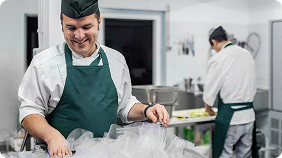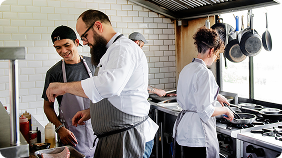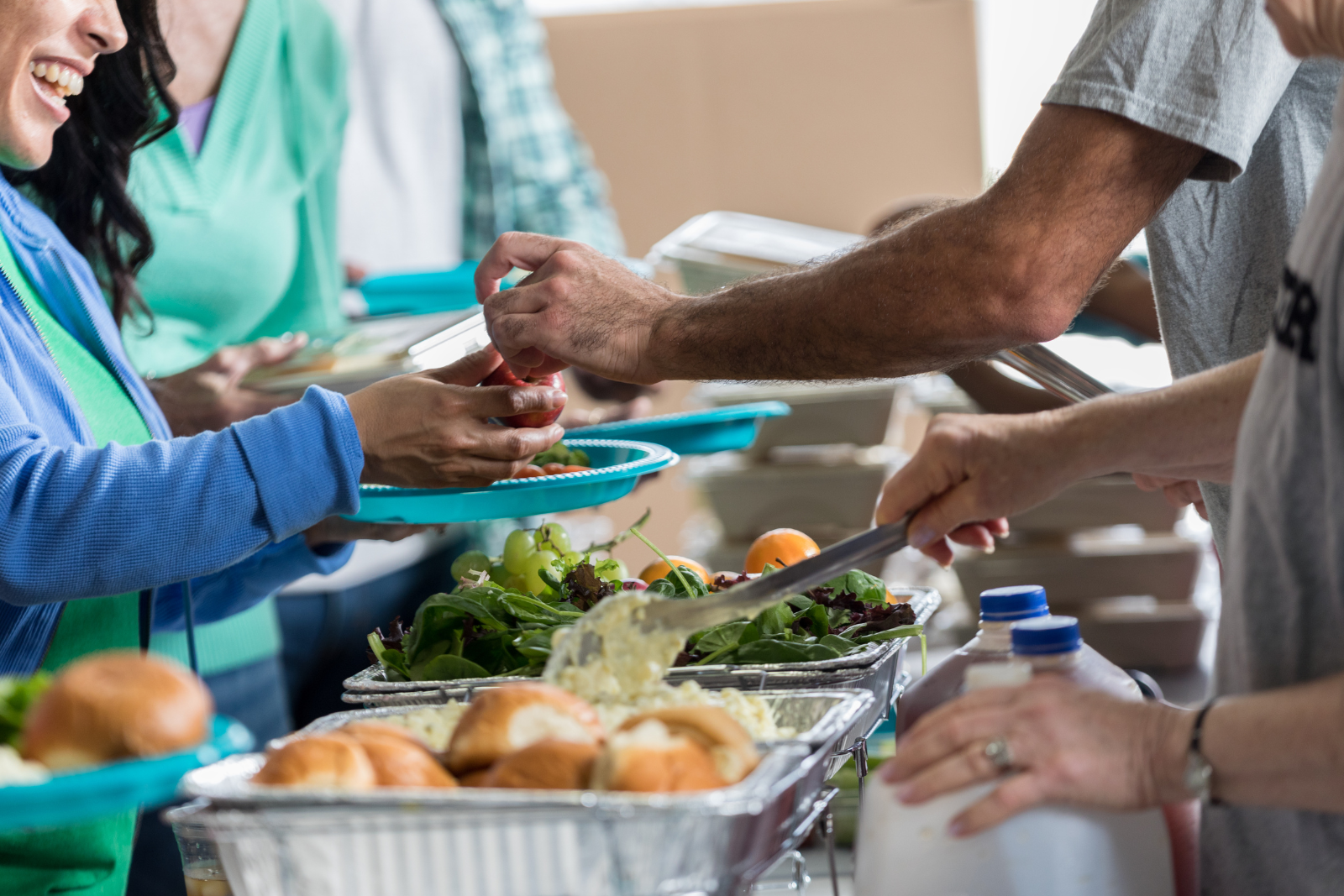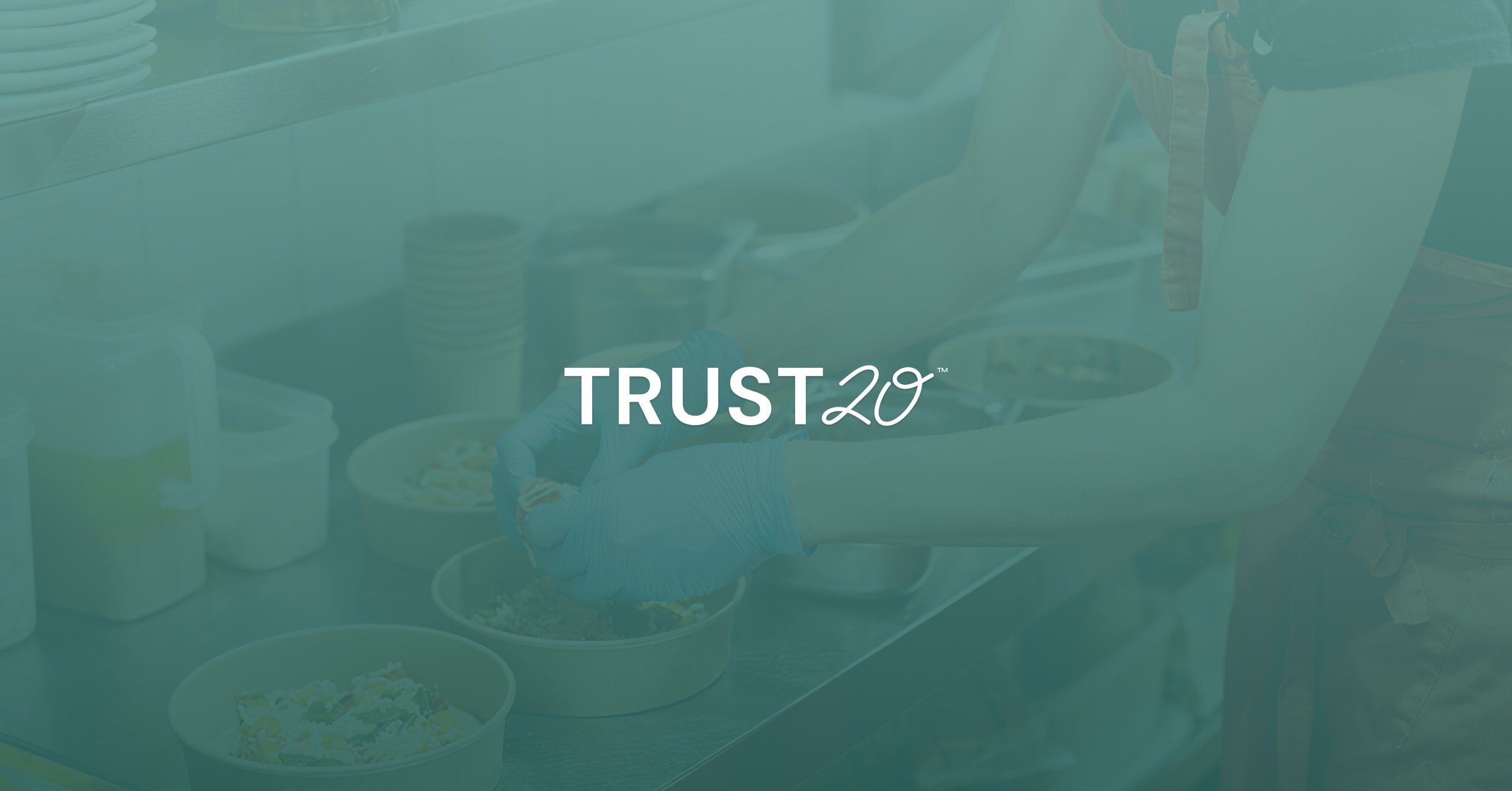Saving the planet is cool, but serving expired mayo? Not so much.
Sustainability is the hot topic in today’s restaurant industry. Customers are becoming increasingly vocal about their preference for eco-conscious establishments. They want proof that their favorite spots are reducing waste, conserving energy, and adopting environmentally friendly practices.
Believe it or not, 90% of customers prefer restaurants that follow sustainable practices, with most saying they’d be willing to pay more (to the tune of 9% more!) to make sure they’re “eating green.”1
Clearly, following sustainable practices has major benefits. But as a foodservice professional, there’s also likely a pressing question lingering in your mind: how can I adopt green practices without compromising food safety?
Read on to learn the answers to all your questions, including:
Why does sustainability matter for my business?
What are some practical ways to safely integrate sustainability into my operation?
What common mistakes should I avoid when going green?
Why does sustainability matter for my business?
Sustainability isn’t just a fleeting trend. For foodservice establishments, it can make a significant difference in how you market your business and manage costs.
Whether it’s through smarter inventory control or energy-efficient appliances, every dollar saved helps. And those savings? They can directly boost your bottom line.
But saving money isn’t the only perk. Customers today are eco-conscious and often choose restaurants aligned with their values. If your restaurant goes green, you’re letting customers know you care about their priorities, which helps improve loyalty and strengthen your reputation.
Finally, environmentally-friendly practices offer a valuable way to reduce your environmental impact. Composting leftover food, adopting reusable containers, and conserving energy are all small changes that can add up to a big impact. Even something as seemingly small and insignificant as leftover lettuce leaves can make a big difference.
What are some practical ways to safely integrate sustainability into my operation?
"Can I reuse this, or will the health inspector faint?" If you've asked yourself this while pondering how to make your restaurant operations more eco-friendly, you're probably not the only one.
For many foodservice professionals, the tug-of-war between ensuring food safety and integrating sustainable practices is a real concern.
Unfortunately, very few of us realize that sustainability and food safety are not actually at odds. They can absolutely work together, and when they do, the results are better for the planet, for your customers, and for your bottom line.
So how exactly do you do that? Let’s review some of our top tips.
1. Smart inventory management
The secret to less food waste starts with smart inventory tracking. Keeping tabs on expiration dates, quantities, and shelf life prevents overbuying, spoilage, and unnecessary disposal.
Start by integrating tools and technologies that simplify inventory management. There are several apps designed for restaurants that can track product freshness and send alerts before ingredients expire, but you don’t have to get that technologically advanced.
The tried-and-true "first-in, first-out" (FIFO) method is a standard operating procedure for a reason: it works. Put your freshest products behind the older ones to ensure you use up inventory in the proper order. It’s a simple way to reduce food waste while keeping everyone safe. Once you master inventory control, you’ll save money and prevent waste from clogging up your trash bin.
2. Proper storage practices
Food stays fresher longer with the proper storage techniques. Invest in high-quality, eco-friendly airtight containers to extend the shelf life of your ingredients and reduce the need for single-use plastics.
Similarly, adjust your freezer and fridge temperatures to optimal levels that meet health department requirements and support sustainability goals. While you’re at it, regularly clean storage areas to prevent cross-contamination.
3. Reducing food waste thoughtfully
Leftovers aren’t a liability. At least, not if you know how to use them creatively.
Those crusty baguettes that didn’t sell? Cut them into croutons or whip up a delicious bread pudding. Extra roasted veggies? Toss them into tomorrow’s soup special.
Just remember to follow proper food safety guidelines to make sure your repurposed ingredients are stored and handled correctly. If you’re not sure whether something is okay to use, don’t use it.
Of course, you cannot repurpose everything. Pay close attention to expiration dates, and know when it’s time to say goodbye to items that have overstayed their welcome.
4. Smart shopping habits
Planning menus in advance isn’t just good business sense. It’s a key habit to adopt for sustainability. Some extra planning can help you create well-organized shopping lists that prevent impulsive or excessive purchases. Buying ingredients in smaller quantities also helps ensure you use the freshest ingredients and ultimately reduces spoilage.
Want to reduce your carbon footprint further? Support local farmers’ markets and suppliers! Local ingredients don’t have to travel as far, meaning fewer emissions during transportation.
Plus, they often come with fresher flavors that your customers are sure to love. In fact, 38% of customers say they’re more likely to choose a restaurant that offers locally-sourced foods.2
5. Understanding food labels
Not every date on a food label means the same thing, and understanding these distinctions can save you a world of waste. “Sell-by” dates indicate when stores should remove an item from their shelves, but it’s often still safe to eat after that date. “Best-by” dates refer to peak quality, not safety, so don’t toss perfectly good products when that date passes.
Sharing this info with your kitchen staff can go a long way in reducing unnecessary disposal. And when you’re buying new ingredients, look for certifications indicating that the products are sustainably sourced or organic.
6. Composting basics
Food scraps don’t have to pile up in landfills! Composting is an excellent way to reduce waste while improving soil health. It’s simple to start, too. Keep a separate bin for compostable waste, such as fruit peels, vegetable scraps, and coffee grounds. Make sure the bin is sturdy, covered, and emptied regularly to avoid attracting pests.
If backyard composting isn’t your thing (as is the case for the vast majority of restaurants and other food establishments, which already have limited space and time to begin with), many cities offer community composting services.
7. Eco-conscious cooking techniques
The way you prepare food can impact both sustainability and your bottom line. Energy-efficient appliances, like induction cooktops, save energy without sacrificing performance. Cooking methods like steaming or grilling also use less energy than others, like deep frying (and, as a selling point, are also healthier for your customers).
Again, sourcing seasonal and locally grown ingredients for your dishes also keeps your menu eco-friendly. Seasonal produce requires fewer resources to grow and ship, and it often tastes better.
Finally, challenge your kitchen staff to make the most of every ingredient. Peel broccoli stems instead of discarding them, or use bones to create a flavorful stock. At the end of the day, it’s these small changes that add up to a more sustainable kitchen.
What common mistakes should I avoid when going green?
Restaurants are often eager to take steps toward greener operations, but this initial enthusiasm can lead to missteps. Let’s review some of the most common mistakes and steps you can take to avoid them.
Overstoring perishable items
You might think buying in bulk or storing extra ingredients will reduce waste, but the truth is, over-storing perishable items can backfire.
Foods can spoil before you have a chance to use them, leading not only to actual waste but also potential health risks if you accidentally serve them past their prime. Stick to ordering what you truly need, and monitor shelf lives carefully to keep your stored ingredients safe.
Unsafe reuse practices
Reusing items is a staple of sustainability, but some practices should never cross the threshold of your kitchen.
Reusing containers without proper sanitization, for example, can lead to cross-contamination. Do you really want yesterday’s chicken juices mingling with your freshly prepped salad greens?
Always prioritize safe handling procedures when reusing anything, from containers to utensils, to ensure you protect your customers from potential foodborne illnesses.
Cutting corners on cleaning
It’s tempting to save resources by reducing water and detergent use during cleaning. However, cutting corners on hygiene can quickly erode the trust customers place in you and your establishment. Dishes, surfaces, and equipment need to be cleaned thoroughly to meet food safety standards.
Saving a few gallons of water isn’t worth jeopardizing your customers' well-being or your reputation.
As these best practices show, you can have the best of both worlds: a sustainable kitchen that keeps customers safe.
Sustainability and safety are the perfect pair
Here’s the good news: sustainability and food safety aren’t opponents–they go hand in hand.
Ensuring every green step you take is rooted in solid food-safety procedures will build appreciation, respect, and trust with your customers, and they’ll keep coming back knowing they can count on you.
Sustainable practices often involve new workflows, and every team member needs to understand how those workflows integrate with food safety standards. If you want to ensure you and your team are on the same page, Trust20 can be your go-to resource for food safety training, certifications, and expert tips to guide your team to sustainable food safety success.
Remember, no sustainable initiative is valuable if it undermines food safety. So stay the course, and while you go green, don’t forget to clean!
Sources:
-
Foodservice Equipment Journal: 90% of customers prefer sustainable restaurant practices
-
National Restaurant Association: State of the Industry: Sustainability is back on the menu






.png)

.png)
